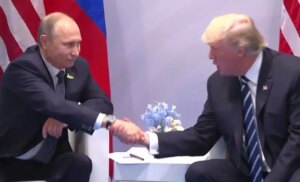The Economic Tug-of-War: What Trump’s Sanction Threat Means for Russia and the U.S.

In a sweeping statement on Truth Social, former President Donald Trump issued a stern warning to Russian President Vladimir Putin, urging him to cease hostilities in Ukraine or risk facing severe U.S. sanctions. Trump stressed, "If we don’t make a ‘deal,’ and soon, I have no other choice but to put high levels of Taxes, Tariffs, and Sanctions on anything being sold by Russia to the United States, and various other participating countries." This raises critical questions: Will tariffs be enough to compel Putin to withdraw from Ukraine, or are they merely symbolic gestures that might lead to unintended consequences?
The Fallout from Sanctions
From January to November 2024, Russian exports to the United States plummeted to $2.9 billion, significantly down from the previous year’s $4.3 billion. The lion’s share of these exports includes refined petroleum, platinum, and nitrogenous fertilizers. Refined petroleum is particularly noteworthy, given its crucial role in the U.S. market. However, the question persists: Does the U.S. have a viable alternative supplier, or will consumers face inflated prices due to reliance on third-party nations?
History has shown us that tariffs often do not work as intended. They can end up hurting consumers and industries in both countries involved. For instance, while the U.S. government may target Russian goods, American consumers could find themselves paying the price through higher costs for imports or a lack of availability altogether.
Russia’s Economic Resilience
Despite the economic pressure, Russia has made significant strides to decouple its economy from Western influence. The removal of Russia from the SWIFT banking system was a severe blow, yet it prompted a rapid reorganization of Russian trade strategies. Nations that were historically sidelined are now stepping into the spotlight through alliances such as BRICS. Trade with China now represents over one-third of Russia’s trade volume, with total bilateral trade exceeding $244.8 billion in 2024—a 1.9% year-over-year increase.
Dmitry Peskov, spokesperson for the Kremlin, appeared unfazed by Trump’s threat of tariffs. He commented, “We do not see any particularly new elements,” indicating that the Kremlin had anticipated such pressures. With diplomatic relations strained and heightened tensions persisting, many believe it is too late for an exit strategy that does not compromise Russia’s standing as a sovereign entity.
A Game of Economic Chess
It’s essential to recognize that while Western politicians may harbor aspirations of reinstating sanctions or tariffs, their effectiveness is highly questionable. Russia’s resilience to economic isolation demonstrates a growing trend where nations could pivot toward forming new trade relations, thereby mitigating the impact of sanctions. Sanctions often come with a cost: they may induce inflationary pressures on American consumers, further complicating the U.S. economy.
The revelation is simple yet profound: Russia has been pushed outside the realm of Western trade and is no longer reliant on the U.S. or Europe for economic support. As observed by various economists, threats of sanctions might backfire, leading to an escalation of the conflict rather than its resolution.
Conclusion
At Extreme Investor Network, we believe in analyzing not just the surface-level implications of economic policies but also the deeper, long-term effects they can have on global markets. With the ongoing conflict in Ukraine and the contentious relationship between Russia and the West, the economic landscape remains volatile. Whether Trump’s threats of sanctions will lead to a successful diplomatic resolution, or simply fuel broader economic discord, remains an open and pivotal question. Stay tuned to our blog for more in-depth analyses and insights into the economic shifts shaping our world today!

